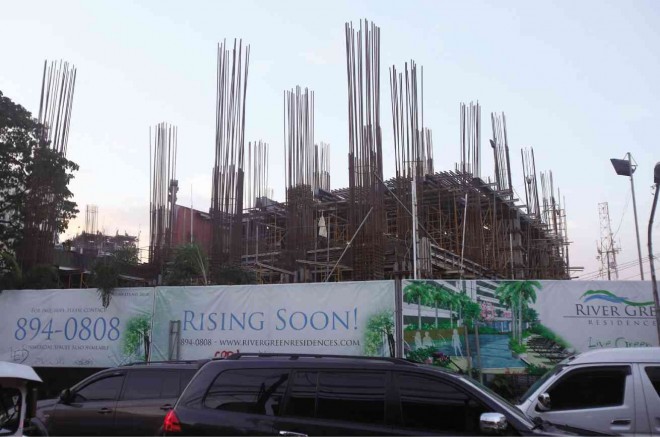Sta. Ana condo controversy worries buyers, says exec

HEIGHT IS MIGHT The rising 30-story condo project in Sta. Ana, Manila, that city officials had exempted from an ordinance limiting residential structures in the area to only seven stories MARIANNE BERMUDEZ
MANILA, Philippines—The head of the company behind a condominium project being opposed by heritage groups and cultural officials in Manila admitted that the controversy had become a concern for its clients.
“I hope the issue will soon be resolved because the buyers of units in this condominium are now expressing concern. It’s hurting our business, which is not good,” said Melessa Chua, president and chief executive officer of CDC Holdings Inc., which is constructing two, 30-story condo buildings within the Sta. Ana heritage zone.
The local zoning ordinance for the area imposes a seven-story height limit for residential structures, but the Manila city council on Tuesday passed a resolution upholding the exemption earlier given by the local zoning board to CDC for its Manila River Green Residences project on Pedro Gil Street.
In an interview on Wednesday, Chua said the condo units were already “sold out” and that her company had poured in more than P1 billion for the project.
She said she was willing to reach out and “explain our side” to residents and conservationists opposing the development, particularly to the Sta. Ana Heritage Tourism Association, which had worked for six years to have their neighborhood declared a heritage zone.
Article continues after this advertisementThe group, led by Sylvia Lichauco-de Leon, maintained that CDC did not secure proper permits—including a clearance to dig at a known archeological site—before it started construction.
Article continues after this advertisementBut Chua disputed this: “Before we started, we already had the permits. The Jesuits, who owned the lot, sold it to us sometime in 2008… Now we understand that [the area] was where the La Ignaciana Retreat House was located, but when we purchased it [the structure] had already been reduced to a skeleton after it was destroyed by a fire decades ago.”
“We are going by what the Jesuits told us. They did not say anything significant about its heritage,” she added. “So we went on to acquire our permits in 2012. We only started construction in January this year but we were stopped by the National Museum, which required an Archaeological Impact Assessment on the site. We complied with that and eventually got the clearance to build.”
Chua said CDC obtained a clearance from the National Museum in April this year. Work involving the building foundations resumed in May and construction got into full swing in August.
Told of Chua’s explanation, De Leon said “everything she said is a lie. We have pictures and documents to prove that construction started in August 2013. The City Hall, the National Historical Commission of the Philippines, and the National Museum sent them several letters in 2013 ordering them to stop construction.”
“They should not be promising 30 stories to their buyers when they didn’t even have permits. That’s not how you do business. They came here and made friends at City Hall and bulldozed their way through,” De Leon added.